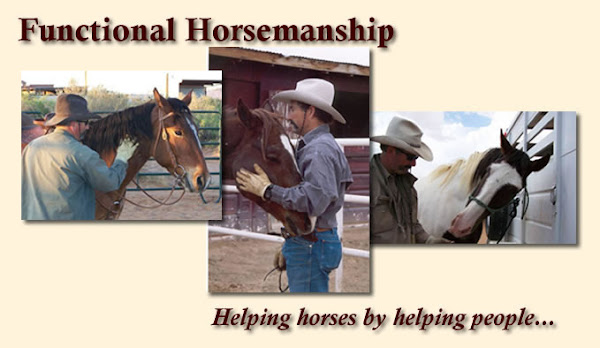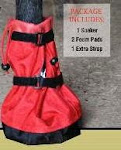A common question I receive is on backing horses. The questions "How do I get a horse to back up" or "How do I get my horse to back up better" are consistently common questions. Unfortunately I also get questions pertaining to what bit to use to get a horse to backup.
In the Arena Challenges I run, I always have one or more stations where the competitor has to back a horse straight, or back while pulling a log, or, back up in a "L", Serpentine or Circle. With respects to my competitors, few do backing well.
In my opinion, backing well actually starts on the ground when you are gentling your horse getting him sacked out and giving to pressure, getting his head soft. In the beginning we usually use a light but steady pull backwards on the lead rope to get the horse to back up. It's common to do this when leading a horse and the horse begins to get too close or even forward of your position. This rear ward pressure on the lead generally works if you provide a release when the horse takes a step. This can be refined to giving the release as a front hoof comes off the ground, and even as we are just starting to introduce the horse to backing, giving a release when there is even a weight shift off a foot, as the horse prepares to take a step. Because a horse can brace pretty easy against this rearward pressure, sometimes combining the rear ward pressure while moving his head left and right will often break a foot loose easier and get a step to the rear, where you can give a release and build on that.
However, we are not always going to be positioned on the ground, at his head, to use rearward pressure on the lead rope, or it could be the reins, to effect a backup. The previously mentioned side to side movement of head makes it easier to transition to just wiggling the lead rope which comes in handy when you are in front of the horse and want the horse to backup. This is handy if you are on the ground repositioning a loop on a calf and need the horse to come forward to give slack and then to backup to get the rope taunt. Another situation may be that you are dismounted fixing a fence and horse gradually move up next to you - if you can back them up with a wiggle of the lead, or reins, you can keep him out of trouble with the barb wire. Again, it's just handy to be able to back your horse from the ground. In the last Arena Challenge I ran, one of the tasks was to dismount, stand inside a 2' x 2' PVC frame and stay in that frame while the rider had to back the horse away from the feel transmitted through the reins or the get down rope.
Everyone has seen horses being pulled back with their head raised and mouth gaping. Occasionally I get the question on what bit works best for backing a horse, and, equally unfortunately, at various events I have heard comments like "I need to find out what kind of bit that guy is using, as his horse backs so well". This kind of question or comment exposes the thinking that backing is achieved and maintained by pulling the horse back using pain or the horse's response to avoid pain to get the horse to back.
Watching a horse being backed with his head thrown up and mouth gaping open - it is not only inefficient and frankly, ugly, it is not fair to the horse. The horse's puts additional weight on the front end, where about 60-65% of his weight normally is anyway, and ends up off balance pushing with his front end. It's like falling backwards almost.
I used to do something like this: ask the horse for softness (to break at the poll), sit on my pockets deep in the seat, then apply alternative pressure on the reins, as gently as I could but firm enough to signal the horse to take a step back, and I would use leg pressure on their belly with my calf, heel or spur. The problem with this is that when we are trying to collect a horse with forward momentum, we are doing the same thing - asking them to break at the poll and using our legs to bring their belly up rounding the back and driving the back end underneath themselves. It's confusing to me, then again I'm not known as a particularly smart man, but it has just got to be as confusing to the horse - we are asking the horse to differentiate the different between a backup and collection at forward momentum with only with a slight weight change in the saddle.
So it was only when I started not using my legs on their barrel that I had the desired action I was looking for. You still have to ask the horse for vertical softness, and a slight weight change in your seat as you put some feel into your reins in an alternating fashion. Give the horse a release and build to where you are giving that release on the same side rein that the front foot is coming off the ground.
Working on this timing will help with us with connecting the reins to the feet in other things we do. I do use my feet, but off the barrel, in a wiggling motion (for lack of a better word) which creates energy that the horse can feel. I work on all these cues with a voice command, so that when I am in a position where I can't use my reins or seat to effectively signal a backup, nor maybe even my seat sometimes, I still have a voice command with the energy created by moving my feet in the stirrups to get the horse to backup. I hope this helps someone else. Safe Journey.











